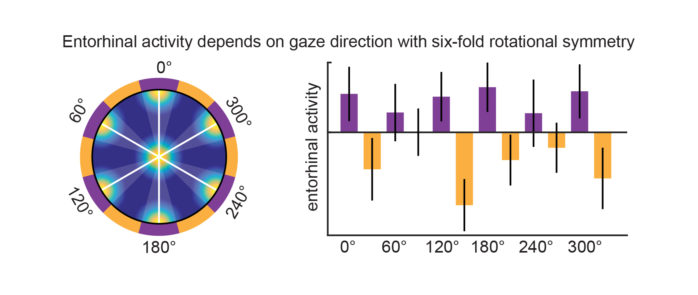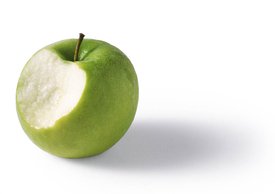Category: Cognitive Navigation
Brief News of Cognitive Navigation (2018-001)
1. Hexadirectional coding of visual space in human entorhinal cortex
by Matthias Nau, Tobias Navarro Schröder, Jacob L. S. Bellmund & Christian F. Doeller in DoellerLab, January 8, 2018

- Entorhinal grid cells map the local environment, but their involvement
How to get the best current activity state in continuous attractor network with population decoding?
Models of head direction and place cells often use some form of attractor network (Redish, Elga et al. 1996; Zhang 1996; Samsonovich and McNaughton 1997; Stringer, Rolls et al. 2002; Stringer, Trappenberg et al. 2002). Typically an array of cells …
How to implement the visual processing module for pose calibration in RatSLAM?
In this report, I summarized some key methods for visual processing module in RatSLAM or RatSLAM-based System. There are more than six approaches as following. By comparing and doing some practical experiments, I think that the intensity scanline profile and …
Understanding Cognition in the Human Brain Project
Imagine an apple — its greenness, sour taste and its fresh, crisp crunch; how does the brain create a representation of such an apple?

This is one of the questions the Human Brain Project (HBP) is asking. To better understand …
Brief News of Cognitive Navigation (2017-003)
1. How the brain keeps time
by Anne Trafton December 4, 2017

- McGovern neuroscientists discover networks of neurons that stretch or compress their activity to control timing.
- Timing is critical for playing a musical instrument, swinging a baseball bat, and
Brief News of Cognitive Navigation (2017-002)
1. This Autonomous Quadrotor Swarm Doesn’t Need GPS
By Evan Ackerman Posted 27 Dec 2017
- Researchers are working hard towards independent autonomy for flying robots,
- The University of Pennsylvania has been doing some particularly amazing development in this area,
Brief News of Cognitive Navigation (2017-001)
-
Neuroscience-inspired Data Compression
By Prof. Michael Milford Dec 21, 2017
- A project: An infinitely scalable learning and recognition network. The idea at the core of the project is to combine neuroscience and machine learning to develop new data compression techniques,
Technology: Use or lose our navigation skills
Roger McKinlay 30 March 2016 in Nature News
Automatic wayfinding is eroding natural abilities, warns Roger McKinlay.
Read more info on the Nature site. Nature 531, 573–575 (31 March 2016) doi:10.1038/531573a

@SWNS A lorry wedged between houses in Bruton, …
OCamCalib: Omnidirectional Camera Calibration Toolbox for Matlab
Author: Davide Scaramuzza For catadioptric and fisheye cameras up to 195 degrees.
The OcamCalib Toolbox for Matlab allows the user (also inexpert users) to calibrate any central omnidirectional camera, that is, any panoramic camera having a single effective viewpoint (see …
Camera Calibration Toolbox for Matlab
Camera Calibration Toolbox for Matlab @ Dr. Jean-Yves Bouguet
This is a release of a Camera Calibration Toolbox for Matlab® with a complete documentation. This document may also be used as a tutorial on camera calibration since it includes …
【Latest Papers】Cognitive Navigation by Neuro-Inspired Localization, Mapping and Episodic Memory
 Abstract One of the important topics in the study of robotic cognition is to enable robot to perceive, plan and react to situations in a real-world environment. We present a novel angle on this subject, by integrating active navigation with …
Abstract One of the important topics in the study of robotic cognition is to enable robot to perceive, plan and react to situations in a real-world environment. We present a novel angle on this subject, by integrating active navigation with …
Nature Neuroscience Nov. 2017 Issue: Focus on Spatial Cognition
From Nature Neuroscience Oct. 31 2017
Navigation is the ability to estimate one’s own position and to track and plan one’s own path in physical space, be it on land, on sea, in the air or even in space. …
Bat brain signals illuminate navigation in the dark
Brief content From ScienceNews BY AMBER DANCE 12:30PM, SEPTEMBER 20, 2017
Neuroscientist Nachum Ulanovsky and his colleagues of the Weizmann Institute of Science in Rehovot, Israel, studying several different species of bats, are investigating how the flying mammals perceive …
Definitions of Cognition & Cognitive Systems
From the euCognition
The following definitions were contributed by members of euCognition in response to a questionnaire. The definitions are listed in the order in which they were submitted.
Cognition is the ability to relate perception and action in a …
Brain Mechanisms of Navigation in Physical and Cognitive Spaces
The following lectures are presented in the NEUROSCIENCE SYMPOSIUM : BRAIN MECHANISMS OF NAVIGATION IN PHYSICAL AND COGNITIVE SPACES at Central European University in August 31, 2017.
This is a special symposium with four outstanding scientist (three Nobel laureates and one Brain Prize winner) …
About
Brain Inspired Navigation Blog
New discovery worth spreading on brain-inspired navigation in neurorobotics and neuroscience
Recent Posts
- How human, animals, robots encode and recall place?
- How the brain constructs time and space and how these are related to episodic memory?
- How environmental novelty modulate rapid cortical plasticity during navigation?
- How the Hippocampal Cognitive Map Supports Flexible Navigation?
- How the geometric structure and underlying circuit organization of hippocampal population dynamics facilitate both memory discrimination and generalization, enabling efficient and flexible learning?
Tags
Categories
- 3D Movement
- 3D Navigation
- 3D Path Integration
- 3D Perception
- 3D SLAM
- 3D Spatial Representation
- AI Navigation
- Bio-Inspired Robotics
- Brain Inspired Localization
- Brain-Inspired Navigation
- Cognitive Map
- Cognitive Navigation
- Episodic Memory
- Excerpt Notes
- Flying Vehicle Navigation
- Goal Representation
- Insect Navigation
- Learning to Navigate
- Memory
- Neural Basis of Navigation
- Path Integration
- Path Planning
- Project
- Research Tips
- Robotic Vision
- Self-Flying Vehicles
- Semantic Memory
- Spatial Cognition
- Spatial Cognitive Computing
- Spatial Coordinate System
- Spatial Learning
- Spatial Memory
- Spatial Resoning
- Time
- Unclassified
- Visual Cortex
- Visual Cue Cells
Links
- Laboratory of Nachum Ulanovsky
- Jeffery Lab
- BatLab
- The NeuroBat Lab
- Taube Lab
- Laurens Group
- Romani Lab
- Moser Group
- O’Keefe Group
- DoellerLab
- MilfordRobotics Group
- The Space and Memory group
- Angelaki Lab
- Spatial Cognition Lab
- McNaughton Lab
- Conradt Group
- The Fiete Lab
- The Cacucci Lab
- The Burak Lab
- Knierim Lab
- Clark Spatial Navigation & Memory Lab
- Computational Memory Lab
- The Dombeck Lab
- Zugaro Lab
- Insect Robotics Group
- The Nagel Lab
- Basu Lab
- Spatial Perception and Memory lab
- The Neuroecology lab
- The Nagel Lab
- Neural Modeling and Interface Lab
- Memory and Navigation Circuits Group
- Neural Circuits and Memory Lab
- The lab of Arseny Finkelstein
- The Epstein Lab
- The Theoretical Neuroscience Lab
- Gu Lab (Spatial Navigation and Memory)
- Fisher Lab (Neural Circuits for Navigation)
- The Alexander Lab (Spatial Cognition and Memory)
- Harvey Lab (Neural Circuits for Navigation)
- Buzsáki Lab
- Brain Computation & Behavior Lab
- ……